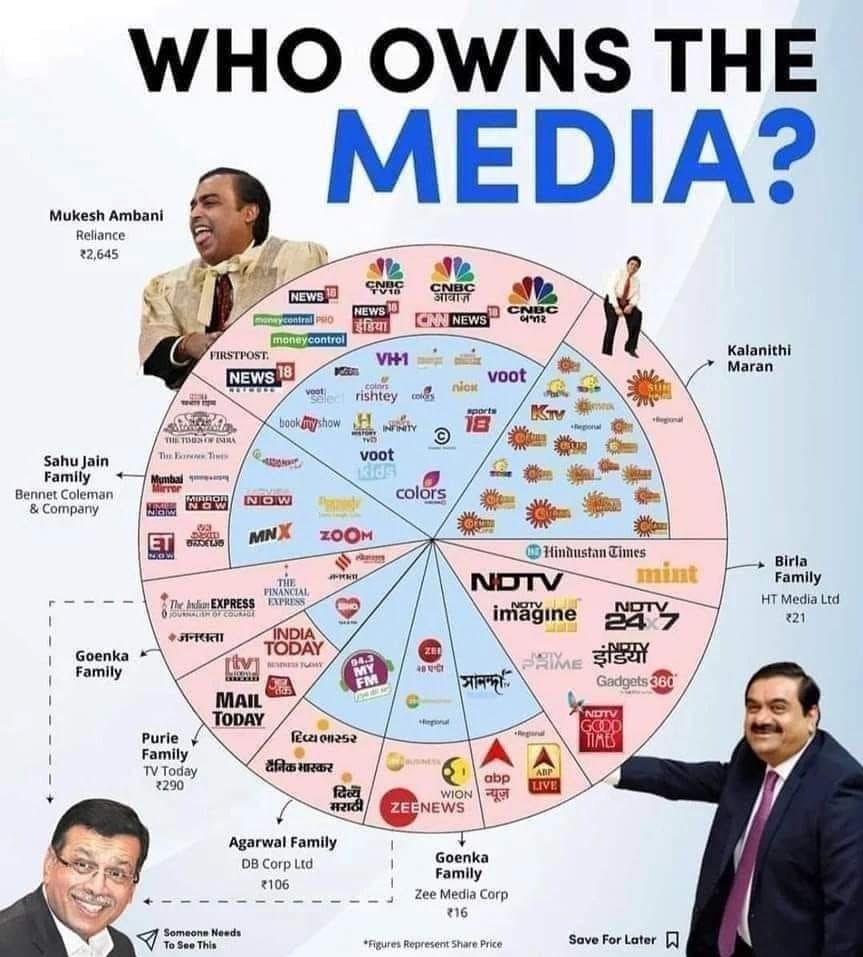Print Media vs Mainstream TV Media: Which one provides more authentic news that matters to the people?
Print Media: Funding and Authenticity
Print media in India, such as newspapers and magazines, rely primarily on reader subscriptions for funding. This means that the news provided by print media is mostly funded by users rather than corporations or advertisers. As a result, print media tends to focus on delivering authentic news that matters to the people, as they are directly accountable to their readers.
In recent years, print media has played a significant role in reporting news that mainstream TV media has largely ignored. For example, print media provided detailed news coverage of the electoral bonds scam, which involved the alleged misuse of funds by political parties. Similarly, print media reported extensively on the "BJP washing machine" scandal, highlighting how 25 opposition leaders facing corruption charges crossed over to the BJP, with 23 of them getting a reprieve.
Do check out which print media is delivering biased news, along with its owner, funding, and advertisements. You can quickly unsubscribe from biased print media and shift to another.
Mainstream TV Media: Funding and Influence
Mainstream TV media in India, on the other hand, is funded mostly by advertisers and corporations. This has raised concerns about the influence of these entities on the news reporting process. Many argue that mainstream TV media tends to prioritize sensationalism and entertainment over providing in-depth, authentic news coverage.
Moreover, mainstream TV media comes with minimal TV package options, and users cannot unsubscribe news channels to save a substantial amount of money. This has led to a situation where people are forced to consume news from TV channels that may not provide authentic and unbiased information.
How can we tackle mainstream media?
The Supreme Court stated, "Don't watch if you don't like: Supreme Court on pleas to regulate TV news channels." However, the government is forcing us to pay for these channels through the minimum TV package. To address this issue, TV news channels should be excluded from the minimum package, allowing users to choose which channels they pay for. Why should we pay for propaganda channels? A similar Public Interest Litigation (PIL) should be submitted before the court to advocate for this change.
Conclusion
While a statistical analysis of news coverage in both print and TV media would provide more concrete evidence, the anecdotal evidence presented in this article suggests that print media may indeed be a better source for authentic news in India. As citizens, it is essential to support and encourage the growth of independent, authentic news sources to ensure a well-informed and engaged society.

How to Identify Biased Media and Make Informed Choices
In an era where information inundates us from all directions, discerning truth from bias has become a crucial skill. Print media, with its longstanding tradition of journalism, remains a significant source of news for many. However, not all publications adhere to unbiased reporting. Recognizing biased print media, understanding its ownership, funding sources, and advertisements can empower readers to make informed choices about where they get their news.
Identifying Bias
Recognizing biased reporting requires a critical eye and an understanding of journalistic standards. Biased reporting often manifests in several ways:
-
Selective Reporting: Biased media may cherry-pick facts or only present one side of a story while ignoring alternative perspectives.
-
Loaded Language: Pay attention to the language used in headlines and articles. Biased publications often employ emotionally charged language to sway readers' opinions.
-
Omission of Context: Context is crucial in understanding news stories. Biased media may omit relevant information that contradicts their narrative.
-
Opinion Disguised as Fact: Be wary of opinion pieces masquerading as news. While opinion pieces have their place, they should be clearly labeled as such.
Investigating Ownership and Funding
Understanding the ownership and funding behind a publication can provide valuable insights into potential biases. Here's what to look for:
-
Owner Background: Research the individuals or entities that own the publication. Are they affiliated with any political parties, advocacy groups, or corporations that could influence editorial decisions?
-
Corporate Ownership: Many media outlets are part of larger conglomerates with diverse business interests. Consider how these interests might influence the publication's reporting.
-
Funding Sources: Examine where the publication's revenue comes from. Are they heavily reliant on advertising from specific industries or interest groups? Such dependencies can influence editorial content.
Analyzing Advertisements
Advertisements can offer clues about a publication's target audience and potential biases:
-
Advertiser Profiles: Take note of the types of products or services advertised in the publication. Are there recurring themes or industries represented? This can shed light on the publication's target demographic and potential biases.
-
Sponsored Content: Be cautious of sponsored articles that may blur the lines between editorial content and advertising. While labeled as advertisements, they can still influence readers' perceptions.
Making Informed Choices
Armed with this knowledge, readers can make informed decisions about which print media to support:
-
Diversify Your Sources: Consume news from a variety of sources with differing perspectives. This helps mitigate the risk of echo chambers and provides a more comprehensive understanding of complex issues.
-
Fact-Check: Verify information from multiple reputable sources before accepting it as truth. Fact-checking organizations can help separate fact from fiction.
-
Be Skeptical: Approach news consumption with a healthy dose of skepticism. Question narratives presented by media outlets and seek out evidence to support claims.
-
Hold Media Accountable: Provide feedback to publications when you identify biased reporting or misinformation. Holding media accountable encourages journalistic integrity and transparency.
By staying vigilant and critical of the media we consume, we can navigate the landscape of print media more effectively and ensure that our sources of news are reliable and trustworthy.